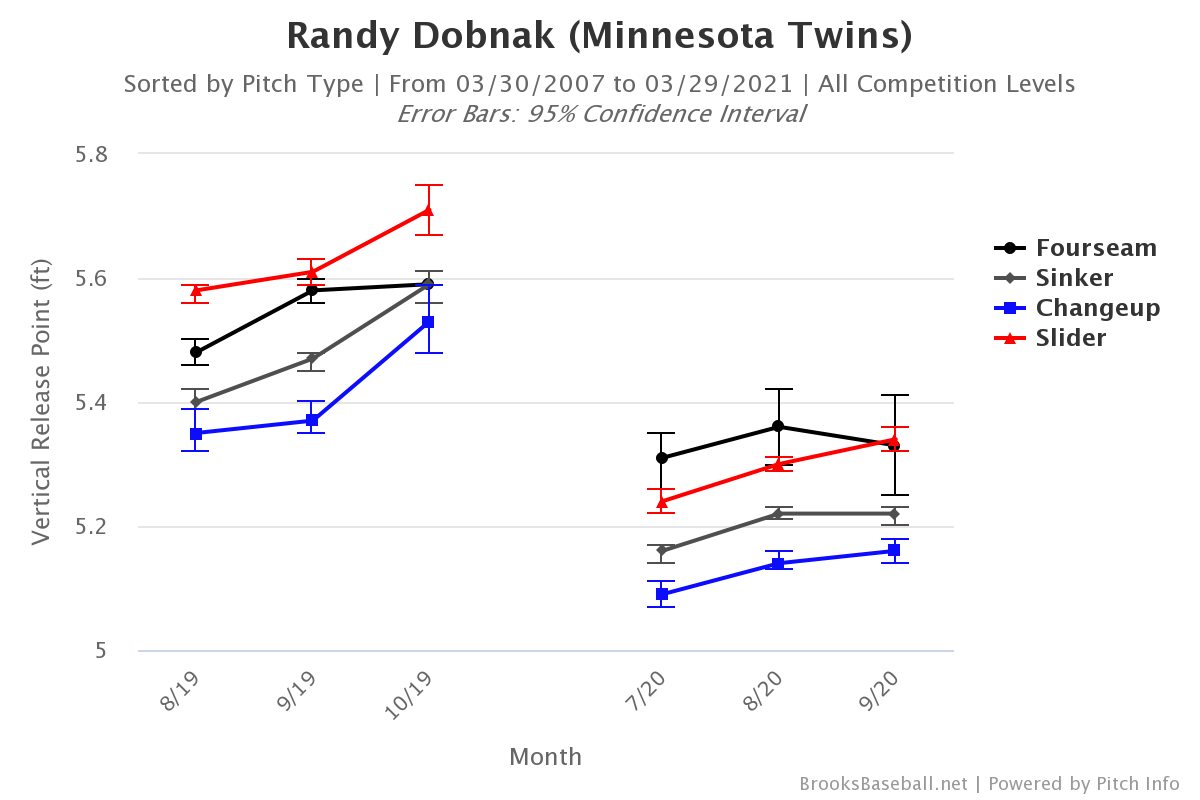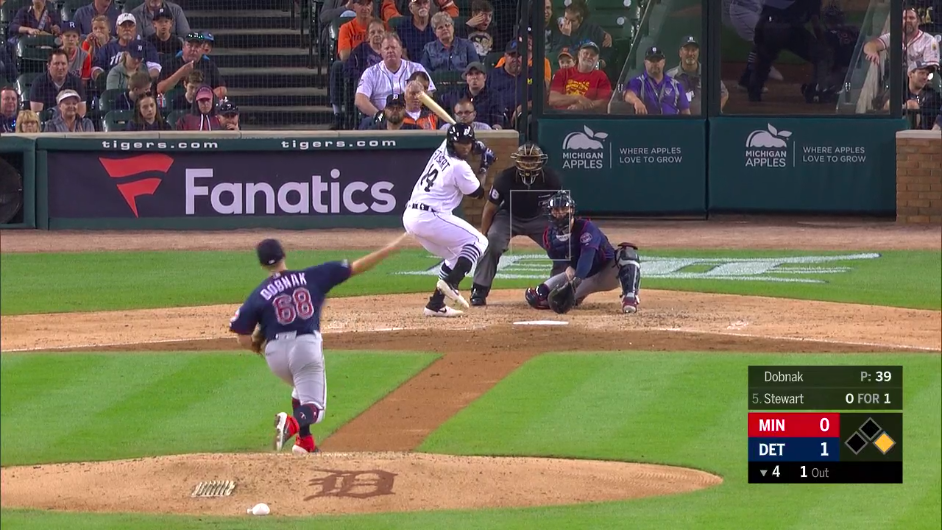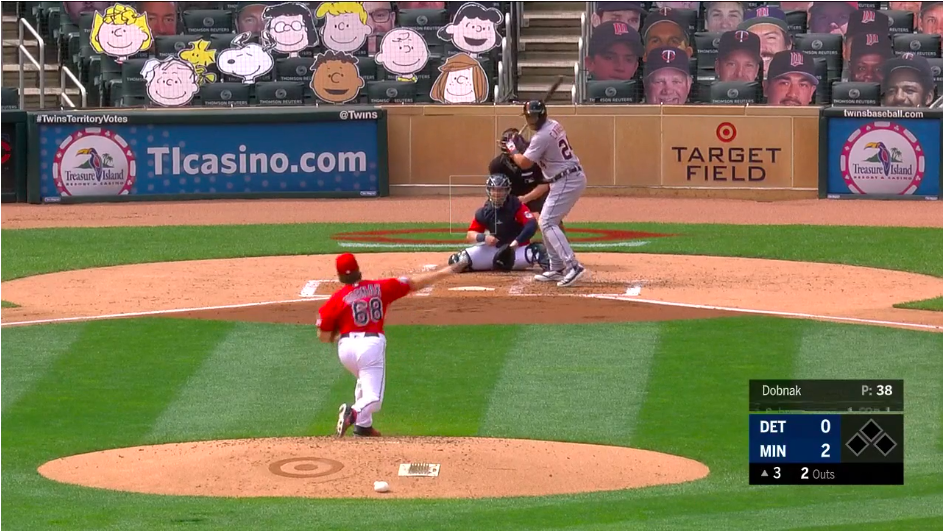Twins Offer Randy Dobnak Some Long-Sought Certainty
Alderson Broaddus University carries an enrollment of fewer than 1,000 undergraduate students and sits in a town — Philippi, West Virginia — with a population just under 3,000 people. Its baseball team plays in the NCAA’s Division II and has produced just two players who were drafted by MLB teams, neither of whom ever actually played in the big leagues. In fact, Alderson Broaddus had never claimed a single major leaguer before Randy Dobnak was called up by the Twins in 2019. Two years before that, he had been playing in a four-team independent league in Michigan, assuming he’d give up baseball for good at the end of the season. After he got to the minors, he drove for rideshare services to make extra money. Even after his first full season in the Twins’ rotation, the team went out and signed two starting pitchers and bumped him to the bullpen. Dobnak’s baseball career has been non-stop uncertainty.
On Sunday, that finally came to an end, as the 26-year-old righty signed a five-year contract extension worth $9.25 million guaranteed and with a potential value of $29.75 million over eight years, per ESPN’s Jeff Passan. The deal offers Minnesota a good deal of flexibility and grants the pitcher a nice guarantee a couple of years before arbitration would have.
Right-hander Randy Dobnak and the Minnesota Twins are in agreement on a five-year, $9.25 million contract extension with three club options, sources familiar with the deal tell ESPN. The deal can max out at $29.75 million with the options and can grow with escalators.
— Jeff Passan (@JeffPassan) March 28, 2021
USA Today’s Bob Nightengale provided more details Monday morning.
The breakdown of pitcher/former Uber driver/Randy Dobnak's 5-year, $9.25M contract with the #Twins:
2021: $700,000
2022: $800,000
2023: $1.5M
2024: $2.25M
2025: $3M
2026: $6M Club option or $1M buyout
2027: $7M club option or $100K buyout
2028: $8.5M club option or $100K buyout— Bob Nightengale (@BNightengale) March 29, 2021
Dobnak made his ascent from indy ball to the majors by dominating the competition at every stop along the way. After joining the Twins in 2017, he threw 26.1 innings in rookie ball with a 2.57 ERA. A 3.14 ERA over 129 innings in a full season of A-ball the next year followed, then a 2.07 ERA in 135 innings across three levels of the minors in 2019. That was good enough to earn him a promotion to the big league staff, where he was as impressive as ever, working 28.1 innings with a 1.59 ERA and 2.90 FIP. And though he regressed slightly in a full-time rotation gig in 2020, his numbers remained impressive for someone pitching his first full MLB season: a 4.05 ERA, 3.96 FIP, and 0.8 WAR in 10 starts.
Dobnak’s quick rise to prominence in baseball didn’t happen the way some others’ do. He didn’t go to Driveline after college and suddenly add four ticks to his fastball. He wasn’t a secret curveball god whose former coaches wouldn’t let him throw his best pitch enough. He’s just a groundball pitcher with run-of-the-mill velocity by 2021 standards, very low strikeout numbers, and very low walk numbers. It isn’t the sexiest profile for drawing swarms of scouts and won’t shoot you to the top of any prospect lists, but so far, it’s worked.
In his first try at facing big league hitters, Dobnak had a strikeout rate of 19.5% and held a groundball rate of 52.9%. Last year, that strikeout rate fell to 13.5%, but the groundball rate rose to 62.1%. That last number was the best in the majors for anyone with at least 40 innings pitched, and it’s the highest rate he’s posted at any level to this point in his career.
Anyone getting hitters to chop at the top half of the baseball that often has to be working with a particularly heavy sinker, and Dobnak is no exception. The vertical movement on his two-seamer is the fourth-largest in baseball, at 7.8 inches above average. Watch him walk right through the front door of a hopeless Yoán Moncada.
Getting the barrel to a pitch like that has proven to be as difficult a task for big league hitters as it was for those in the Mountain East Conference, and Dobnak is still looking for ways to make it even harder. Last year, he dropped his release point by about three inches on each of his offerings, per Brooks Baseball. The screenshots that follow the graph are from slightly different camera angles, but I think the difference can be identified easily.



Dobnak’s change in arm slot gave a four-point boost to his sinker’s ground ball rate, but the pitch most impacted was his slider. Responsible for just a 30.8% grounder rate in 2019, that number jumped all the way to 57.8% of batted balls in 2020. That came with a sharp drop in the pitch’s whiff rate, however, from 46.3% to 33.8%. That sacrifice was a major culprit for Dobnak’s overall strikeout numbers going from mediocre to downright miserable, but overall, it made the slider more effective; its already stellar .245 xwOBA in 2019 fell to .231.
It’s easy, then, to see why the Twins saw enough here to make a bigger investment in Dobnak’s next several years. He’s currently on the outside of the starting rotation looking in, after Minnesota signed Matt Shoemaker and J.A. Happ this winter, but he should be the next guy in line should an injury happen or if someone needs replacing. His sinker, slider and changeup give him a good three-pitch mix (he also has a four-seamer, but it’s rarely used); it’s the kind of arsenal that can help him stick as a starter. He also hasn’t shown much vulnerability to left-handed hitters, actually performing better against them to this point in his career than he has against right-handers. All that comes at the cost of $2–3 million a year — a modest sum for a starter, and one that may give Dobnak some regrets about taking this deal just 19 games into his MLB career if he improves.
On the other hand, Dobnak’s career so far consists of, well, 19 games, and while he’s started 14 of those, he averaged only 4.6 innings per start in 2020. There remains a good chance that he winds up as a multi-inning reliever, but he could still have considerable value in that role. With how affordable the option years will be, settling in as an effective reliever who specializes in stifling walks and homers late in games has plenty of value for the Twins.
The chances that this turns out to be a bad deal for Minnesota are much smaller than the chances it turns out to be a bad one for Dobnak, yet it’s easy to see why he signed on as well. Pitchers who go from a D-II college into indy ball aren’t generally supposed to make the majors, much less get offered multi-million-dollar guarantees. As a former rideshare driver myself, it’s at least enough to make me want to go try out a few fastballs.
Tony is a contributor for FanGraphs. He began writing for Red Reporter in 2016, and has also covered prep sports for the Times West Virginian and college sports for Ohio University's The Post. He can be found on Twitter at @_TonyWolfe_.

Seems like mostly a fair deal for everyone. Realistically the risk/reward on this is low enough for the Twins that even if he washes out $9mm for a bunch of future “call” options is worth pulling the trigger. And for the Dobber, banking $9mm is a no-brainer.
HAVING SAID THAT – the cynic in me wonders why on earth Dobnak was in the “bullpen” to start the season. Help me out here, he’s been a legitimate starter for the last 2 years. Why is he all of a sudden a reliever? The cynic in me wonders if this relief “stint” was in part to help out the appeal of the extension. $9mm for a fungible backend bullpen piece sounds more reasonable than a starting pitcher on a playoff team. And realistically Dobnak is the latter, but kind of being priced as the former. Fair deal either way, but I’m expecting the bullpen thing to never actually happen.
The Twins have been extremely stingy with his use. I think they feel his stuff especially is problematic through the third time of the order, so there’s been plenty of starts where he was pulled in the 5th-6th but was significantly below 100 pitches.
For sure … but if you’re pitching into the 5th or 6th and you’re under 100 pitches, that means that you are a Good Starting Pitcher. Which Dobnak has been for basically 2 years. We don’t know if it will stay that way, I just don’t believe that they are actually going to be using him as a reliever. The new “reliever” tag feels like a big of a head fake to try and sweeten the $9mm extension to me. The guy is DEFINITELY starting until he proves he can’t.
Happ and Shoemaker have longer track records. Teams need pitching depth, so having a reliever you can convert to a SP on short notice is valuable. Dobnak has options which further helps with roster flexibility.